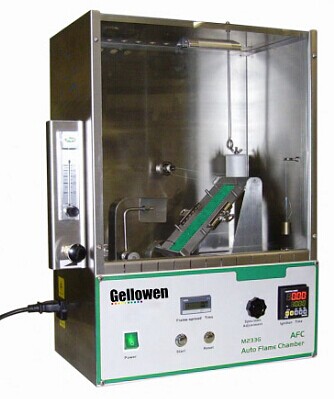
NewsInformation Center
What materials are suitable for testing with the 45° flammability tester?
2023/10/20
The 45° Flammability Tester is generally used to test the flammability of textiles and other similar materials. This equipment helps researchers to obtain critical information about the material during the combustion process.
The following are some of the materials that are suitable for 45° flammability testers:
1. Textiles:
This is the most common type of material tested. It includes various clothing textiles, curtains, carpets, etc. Both natural and synthetic fibres can be tested using the 45° Flammability Tester. This test can help manufacturers avoid safety hazards caused by materials that are too flammable.
2. composite materials:
Fabrics, non-woven fabrics, laminates, etc. made from different materials and technologies can be tested with the 45° Flammability Tester.
3. foam materials:
Soft foam materials used in upholstered furniture and some sports equipment can also be tested for 45° flammability.
4. paper and paper products:
Although not as common as textiles, paper and paper products (including wallpaper) can also be tested for important parameters such as flame propagation speed using a 45° flammability tester.
5. plastic films:
Certain transparent films, such as plastic packaging films, can also be tested for 45° flammability. Through the test, the burning characteristics of the material in a fire event can be determined.
6. Others:
In addition, some fire-resistant materials for special occasions (e.g., firefighting clothing, seat belts, etc.), building decoration materials, packaging materials, etc. can also be tested using the 45° flammability tester.
Different materials produce different effects when burning, so the test should be conducted according to the corresponding national or industry standards to ensure the accuracy and reliability of the test.
It should be reminded that the 45° flammability tester is only one of the many types of fire test equipment, and the most suitable test equipment and method should be selected in accordance with the actual use of the material's environment and conditions of use. In fact, some materials may require a variety of ancillary fire rating tests in order to gain a full understanding of their performance in a fire.
All combustion tests should be carried out in a specialised laboratory environment and in accordance with the appropriate standards. Testers should record test results correctly so that they can be used for product design, risk assessment and regulatory compliance.
Overall, conducting 45° flammability tests is very important for understanding the combustion behaviour of various materials, ensuring safety in use and improving product quality.
Previous: Newsflash: 2024 HongKong Houseware Fair
N e x t : The difference between the tracking index and the Comparative Tracking Index?




